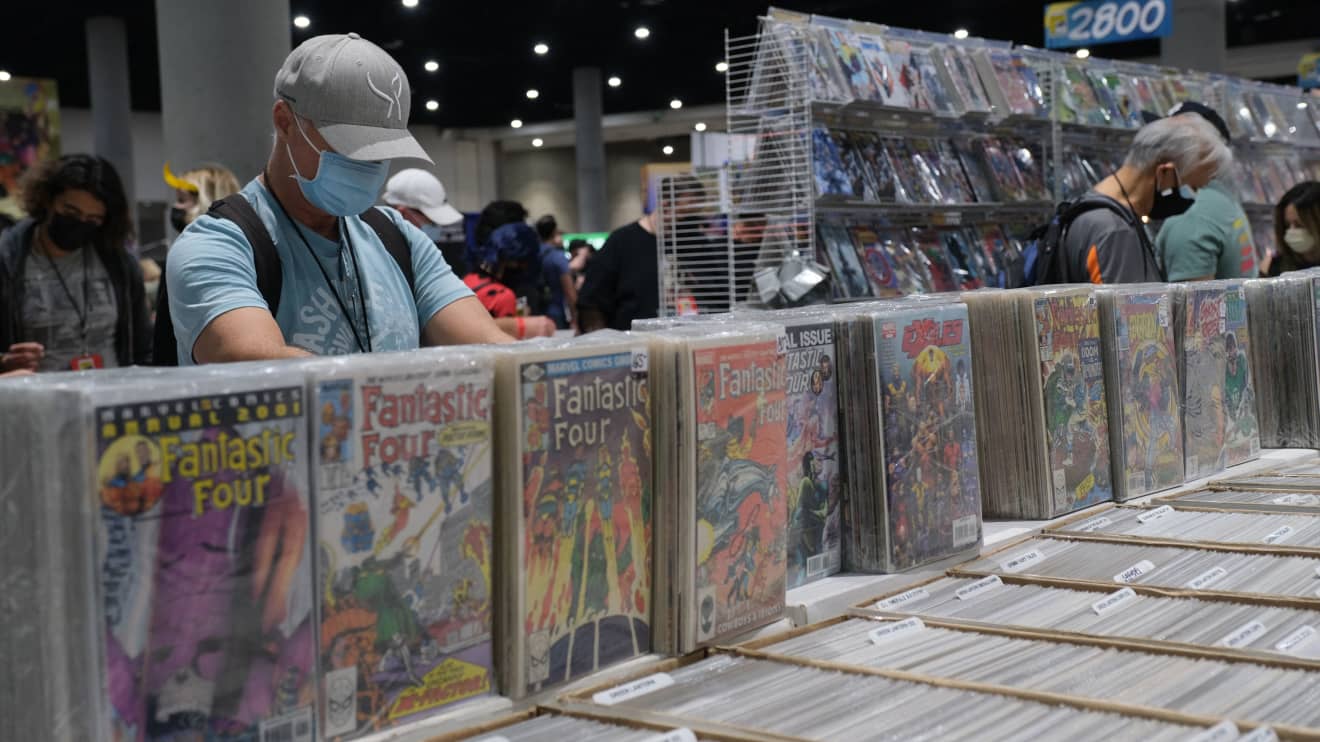This post was originally published on this site
When Mark Michaelson purchased what he considered the holy grail of comic books — Superman No. 1, dating from 1939 — he wasn’t thinking about it as an investment. Instead, the comics fan says he bought it from a private collector in 1979 for somewhere between $1,000 and $2,000 simply because he wanted it.
“Everyone sets a little goal for themselves,” said Michaelson, a Houston resident who has worked as a health-care executive.
Michaelson’s goal is now likely to result in a huge payoff. The comic is currently up for auction and is already receiving bids above $2 million. The online event, which is being run by auction house ComicConnect, ends Thursday.
Such eye-popping figures are becoming the norm in the comic-book world. This year has already seen sales of $3-million plus for two comics — an Amazing Fantasy No. 15, from 1962, which features the first appearance of Spider-Man, went for $3.6 million and an Action Comics No. 1, from 1938, which features the first appearance of Superman (before the character had his own book), went for $3.25 million.
“The U.S. may be printing more money to reduce the blow of the health crisis, but ‘they’re not creating more Superman No. 1s.’”
Comics of more recent vintage are also selling for significant sums. A Teenage Mutant Ninja Turtles No. 1, from 1984, sold for $245,000.
In short, these relics of our youth are “now being recognized as a legitimate alternative investment,” said Matt Nelson, president of Sarasota, Fla.-based CGC, a company that grades the condition of comic books, trading cards and other collectibles.
Various factors are playing into the comic-book boom, industry experts say. Some note that even as the stock market surges, investors are looking for tangible assets, especially given all the financial uncertainty caused by the pandemic. Stephen Fishler, chief executive of ComicConnect and its affiliated Metropolis Collectibles, an online shop, said the U.S. may be printing more money to reduce the blow of the health crisis, but “they’re not creating more Superman No. 1s.”
Another critical element is the growing popularity of comic-book characters in the broader entertainment world. Hardly a month goes by that doesn’t see the release of a major superhero flick with a prominent cast. Coming up this Friday from Columbia Pictures and Marvel Studios: Spider-Man: No Way Home, starring Tom Holland, Zendaya, Marisa Tomei and Benedict Cumberbatch, among others.
““Superman is not going to disappear.””
With Hollywood so invested in the success of these pictures, it only stands to reason the characters will remain as relevant as ever, says Fishler. “Superman is not going to disappear,” he said.
Still, those looking to make money from comic books need to be versed in the dynamics of the market. As is the case with other collectibles — think baseball cards, a category that has also boomed of late — it comes down to finding the right item in the right condition.
Naturally, the first book in any series — or a book with the first appearance of a major character — will command a premium, experts say. But condition can’t be ignored. “A defect can be the difference of thousands of dollars,” said Nelson, pointing to a half-inch corner crease as an example.

Attendees browse comic books during Comic Con Special Edition in San Diego on Nov. 26, 2021.
Chris Delmas/AFP via Getty Images
While attention is often paid to the comics of older vintages — the Golden Age (roughly 1938-1956) and Silver Age (1956-1970) eras — experts say that doesn’t mean more recent releases aren’t worth seeking out, especially for investors and collectors with fewer bucks to spend. Nelson says comics from the ‘70s and ‘80s are an up-and-coming category and there are books selling for $1,000 and under from that period worth considering. (He likes G.I. Joe comics, for example.)
Should comics be taken seriously as an investment like stocks and bonds? Some financial advisers say even the most valuable of collectibles can’t be considered that way. Patrick Lach, an adviser with his own firm in Louisville, Ky., points to an obvious negative — collectibles don’t generate cash the way, say, a stock pays dividends or real estate generates rent payments.
“The only way Person A can make money from a collectible is if Person B is willing to pay more for it,” Lach said.
But there’s no denying there are a lot of Person B’s out there for the right collectibles, others note. Bart Brewer of California-based Global Financial Advisory Services says collectibles can have a small role in a balanced portfolio. He suggests committing no more than 5% of total assets to it and considering it an “exotic” investment. “I view this like emerging-markets stuff,” he said.
Meanwhile, Michaelson is waiting to see what his Superman comic will net. Then, he can move on to the rest of his collection of 50,000 books. “My wife wants her garage back,” he said.

